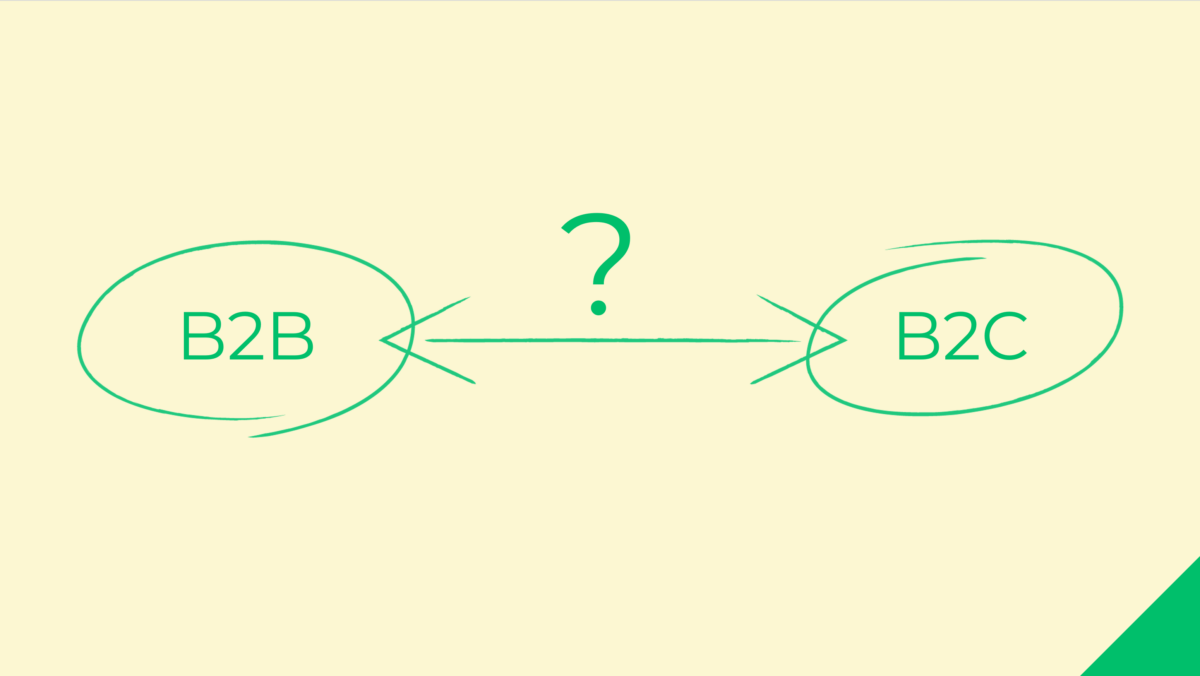
While outwardly straightforward, business-to-business (B2B) payments sometimes cause quite a headache to companies around the world. High fees, slow processing times, confusing and regionally-specific regulatory standards – these are just some of the problems businesses commonly run into.
Nevertheless, with a bit of care and attention, these intricacies can be handled with relative ease, especially if you decide to go the way of automation. So, without further ado, let’s zoom in on the nitty gritty of B2B payments and how to manage them in the most optimal way for your business.
Business-to-business payment processing
Efficient B2B payment methods are crucial for ensuring smooth business operations since they impact cash flow, supplier relationships, and overall financial health. B2B payments involve transactions between businesses, typically in the form of bank or electronic fund transfers, checks, or digital payment platforms. The speed and reliability of these methods directly affect how quickly suppliers receive funds, influencing their liquidity and operational efficiency.
Benefits of efficient B2B payments include improved cash flow management, reduced transaction costs, and enhanced vendor relationships due to timely payments. Additionally, if you decide to implement automation, you can also expect a reduced rate of error and faster reconciliation, as well as smoother financial reporting and forecasting.
That being said, certain challenges persist. Diverse payment systems, regulatory compliance, and security concerns add complexity, while cross-border transactions require businesses to handle multiple currencies and deal with varying legal frameworks.
What’s the difference between B2C and B2B payments?

Key differences include:
| B2C payments | B2B payments | |
| Transaction volume and size | High volume of low-value transactions | Lower volume but higher-value transactions |
| Payment methods | Common methods include credit/debit cards, digital wallets, and cash | Typically involves bank transfers, checks, EFT, and sometimes specialised digital payment platforms |
| Payment terms | Immediate payment is standard. | Often involves credit terms with payment due in 30, 60, or 90 days. |
| Complexity | Simpler transactions with fewer steps and intermediaries. | More complex with multiple approvals, invoicing, and sometimes custom payment arrangements. |
| Regulatory compliance | Consumer protection laws heavily regulate payments. | Compliance with financial regulations, anti-fraud measures, and sometimes industry-specific requirements. |
| Processing time | Generally instantaneous or within a few days. | Can take several days to weeks, depending on payment terms and processing methods. |
| Technology and integration | Easy to integrate with e-commerce platforms and point-of-sale systems. | Requires integration with accounting and ERP systems for seamless operation. |
What are the strategic benefits of efficient B2B payments?
The first strategic benefit is improved liquidity and cash flow management. Efficient B2B payments ensure timely inflows and outflows of funds, while automated payments reduce delays and errors. All of these combine to enhance predictability and allow businesses to optimise their strategic planning, working capital, and short-term financing.
The second benefit has to do with reliability and trust. Basically, with timely payments, suppliers are more likely to offer favourable terms, discounts, and priority orders. Apart from lower costs, this can also lead to smoother supply chain operations.
And finally, the third key benefit is streamlined payment processes made possible by automated clearing houses (ACH), blockchain solutions, and integrated payment platforms. These innovative technologies reduce the need for manual intervention, minimise processing time, and enhance security. In practical terms, this means that businesses can enjoy shorter transaction cycles, lower processing costs, and smoother regulatory compliance – in addition to responding more swiftly to market changes.
What payment channels are used for B2B payments?
B2B payments, particularly those facilitated by ConnectPay, involve several core payment channels designed to streamline transactions between businesses. These channels include:
- SEPA transfers: SEPA allows for efficient, low-cost euro transactions across the European continent. This channel is crucial for businesses operating within the EU.
- SWIFT payments: The SWIFT network supports international transactions, enabling businesses to send and receive payments globally in various currencies.
- Payment cards: Business payment cards, both physical and virtual, provide a flexible and secure method for managing expenses and making purchases.
- Automated Clearing House (ACH): ACH payments facilitate direct bank transfers within the same country, often used for recurring transactions like payroll or vendor payments.
- Real-time payments: Services that allow for instant fund transfers, which are increasingly critical for businesses requiring quick settlements.
- Direct debit: This channel enables businesses to collect payments directly from customer bank accounts, commonly used for subscription-based services.
Each of these channels offers unique advantages in terms of speed, cost, and convenience, catering to various business needs and operational scales. ConnectPay integrates these methods to provide comprehensive and efficient payment solutions for B2B transactions.
What are the most popular cross-border B2B payment methods using ConnectPay?
To make this as clear as possible, let’s take a look at some examples of how the key payment methods are used, as well as their advantages and disadvantages.
| Example | Advantages | Disadvantages | |
| SEPA transfers | A German company paying an Italian supplier. | Low-cost, fast euro transfers within the EU. | Limited to euro transactions and EU countries. |
| SWIFT payments | A UK firm paying a U.S. vendor. | Supports multiple currencies and has global reach. | Higher fees and longer processing times. |
| Real-time payments | A tech company in Estonia making an instant payment to a software provider in Sweden. | Immediate settlement, beneficial for urgent transactions. | May have higher costs and limited global availability. |
And here are some basic use cases:
- Import/export businesses: Efficient payments to international suppliers.
- Freelancers and contractors: Quick payment settlement globally.
- Subscription services: Regular cross-border payments for software or services.
As you can see, these methods are great for streamlining global business operations, though they vary in cost, speed, and geographic reach.
How to choose B2B payment processor
The first thing you’ll need to do is choose a suitable B2B payment processor. Let’s take ConnectPay as an example. Its platform is designed to facilitate seamless financial transactions for businesses across the globe. ConnectPay offers a range of products and services, including SEPA and SWIFT transfers, virtual cards, digital wallets, multi-currency support, embedded compliance, and much else besides.
How to pick the best B2B payment service provider
When casting about online for the best B2B payment processor for your business, look for companies that ensure the following:
- Compliance with regulatory standards and robust security measures.
- Multi-currency support and seamless cross-border transactions.
- Fast payment processing times, especially for international transactions.
- Transparent fee structure without hidden charges for, e.g., currency conversion.
- Easy integration with your accounting, ERP, or CRM systems.
- Reliable and prompt customer service regardless of the time of day.
- Ability to scale and handle larger transaction volumes as your business grows.
- Straightforward, intuitive, and user-friendly interface.
What are the common challenges of B2B payments
Businesses using B2B payments may face challenges like high transaction fees, slow or inconsistent processing times, and daunting complexity when making international transfers. For example, traditional banks often impose hefty fees and lengthy processing for SWIFT payments, which can sometimes result in cash flow issues.
To mitigate these issues, ConnectPay offers lower fees and faster processing for SEPA and real-time payments, compared to traditional providers. For instance, a European exporter using ConnectPay can save on fees and receive payments quicker than would be possible with a conventional bank.
Additionally, ConnectPay’s multi-currency accounts simplify international transactions, reducing the need for multiple bank accounts. In contrast, some other providers lack seamless multi-currency support, which is a problem if your business is engaged in trade globally.
To ensure timely payments and reduce manual errors, you may also want to leverage ConnectPay’s automated invoicing. The efficiency gained in this manner is critical for maintaining healthy cash flow and operational efficiency in the global market.
Ready to optimise your business-to-business payments?
Efficient B2B payments are vital for smooth business operations, impacting, among other things, supplier relationships and financial health. Traditional challenges like high fees, slow processing times, and complex international transactions are well-known to businesses as key factors in reducing efficiency. ConnectPay addresses these issues with lower fees and faster processing for SEPA and real-time payments, making it more cost-effective than traditional providers.
ConnectPay’s multi-currency accounts simplify global trade, while automated invoicing ensures timely payments and reduces errors. Needless to say, these features enhance cash flow management, vendor relationships, and overall operational efficiency.Finally, we’d like to encourage you to take a closer look at your current payment strategies and see if you can spot any areas due for improvement. And if you have questions – or simply need a bit of expert advice – don’t hesitate to contact ConnectPay specialists at any time!







